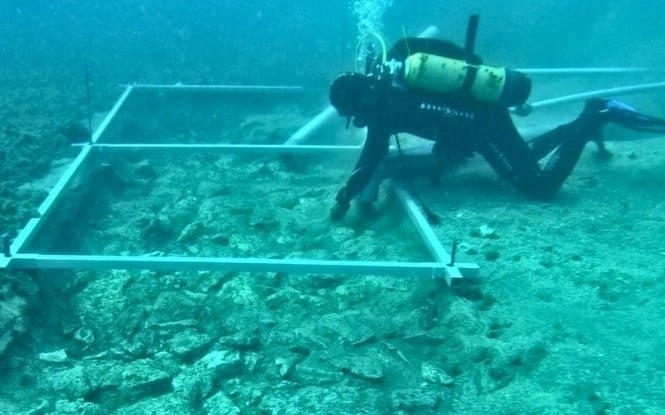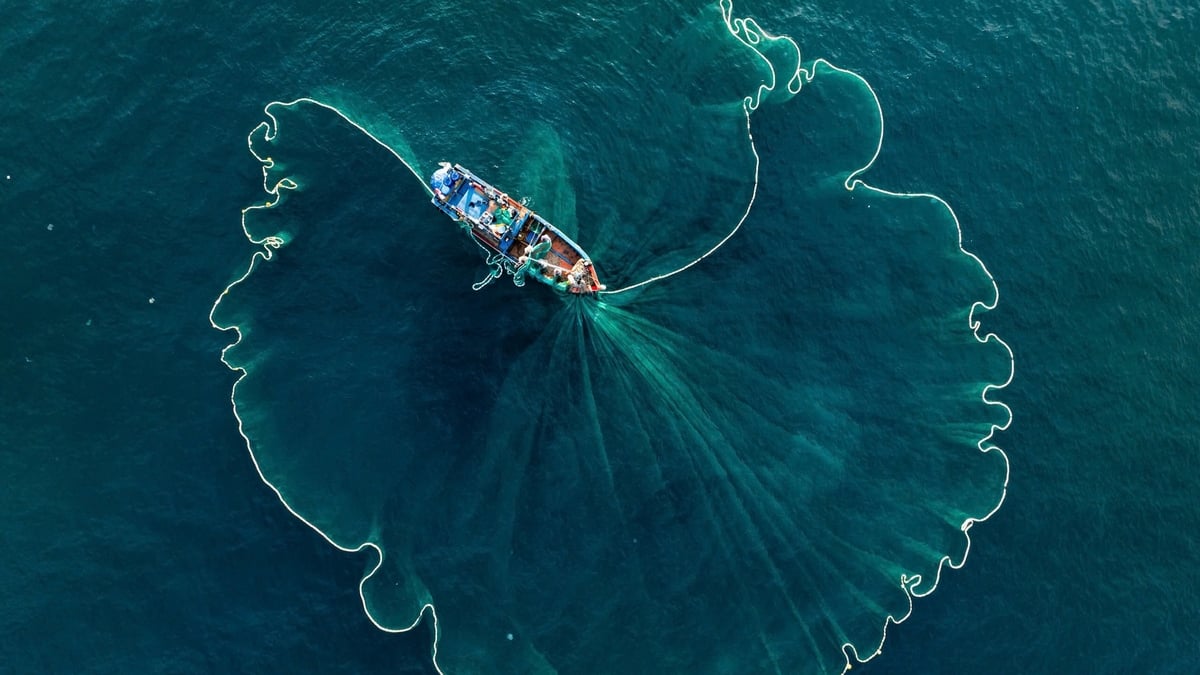Archaeologists have made a fascinating discovery in the waters off the Croatian island of Korčula: an ancient road linked to a lost maritime culture known as Hvar, who inhabited the area during the Neolithic period.
The remarkable discovery was made by Igor Borzić, a researcher at the Department of Archaeology at the University of Zadar, who discovered unusual structures about 15 feet (4.57m) underwater in Gradina Bay on the west coast of Korčula.
Along the path, the team found flint blades, stone axes and pieces of millstones, adding to the understanding of the mysterious Hvar people who came to the area some 7,000 years ago.

A diver explores an underwater path off the island of Korcula. Photo: University of Zadar.
The underwater research is a collaborative effort involving many scientists and organizations, led by archaeologist Mate Parica, who has been investigating the site for several years. Many underwater ruins and artifacts from Hvar have been discovered, including a settlement built on an artificial island. The recently discovered road serves as a connection between the island and the Korčula coast.
The Hvar civilization left behind many artifacts, including ornaments and pottery, that shed light on their subsistence farming practices and burial rituals.
Excavations have not been limited to underwater surveys, but have also extended to ancient sites on land. One such site is a cave in the nearby town of Vela Luka, which has been continuously occupied by various cultures for at least 19,000 years, including the Hvar people.
Ongoing archaeological research promises to reveal more fascinating details about the maritime civilization that thrived in the region thousands of years ago.
(Source: Tien Phong)
Useful
Emotion
Creative
Unique
Wrath
Source




![[Photo] General Secretary To Lam receives First Deputy Secretary General of the African National Congress (ANC) of South Africa](https://vphoto.vietnam.vn/thumb/1200x675/vietnam/resource/IMAGE/2025/5/20/bb2999907e1245d5b4c7310a890d8201)






























![[Photo] Vietnamese shipbuilding with the aspiration to reach out to the ocean](https://vphoto.vietnam.vn/thumb/1200x675/vietnam/resource/IMAGE/2025/5/20/24ecf0ba837b4c2a8b73853b45e40aa7)
![[Photo] Award ceremony for works on studying and following President Ho Chi Minh](https://vphoto.vietnam.vn/thumb/1200x675/vietnam/resource/IMAGE/2025/5/20/a08ce9374fa544c292cca22d4424e6c0)































































Comment (0)